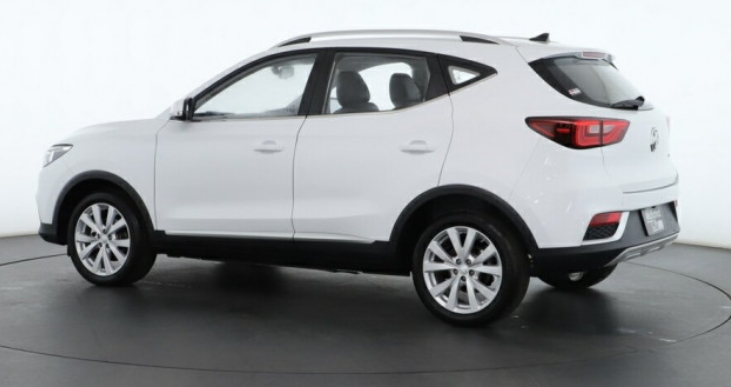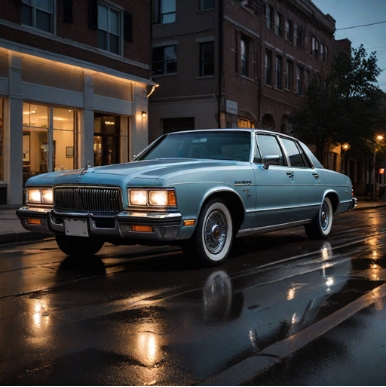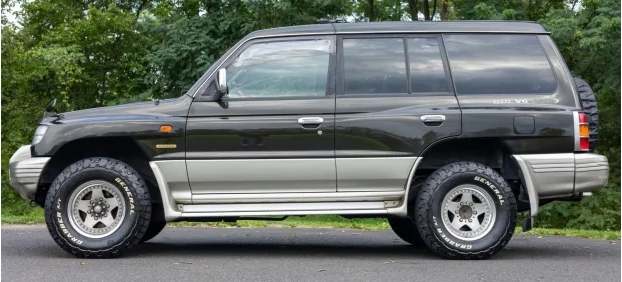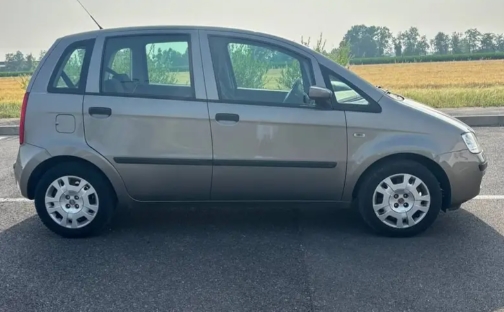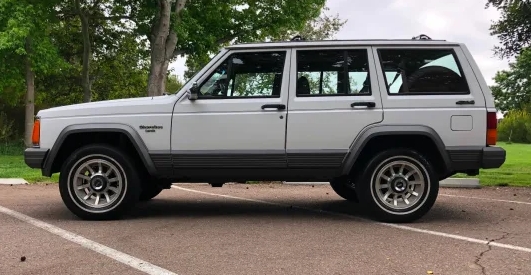The Evolution of The MG ZS
Of all the nameplates in the automotive world, few encapsulate a brand’s tumultuous death and phoenix-like rebirth quite like the MG ZS. It is a badge worn by two fundamentally different vehicles, born in different centuries, from different companies, and for entirely different purposes. The first was a fiery, analogue sports saloon, a last gasp of greatness from a dying British icon. The second is a pragmatic, tech-focused crossover, the very vehicle that would resurrect the octagonal badge for a new global generation. This is the story of their evolution—a tale of two Zeds.
Part 1: The Zed Car – A Sports Saloon Forged in Adversity (2001-2005)
The story of the first MG ZS begins in the turbulent aftermath of BMW’s sale of the Rover Group. In 2000, the newly formed MG Rover Group, under the stewardship of the Phoenix Consortium, found itself with a portfolio of ageing Rover models and a shoestring budget. The challenge was immense: how to inject excitement and attract a new, younger audience without the funds for ground-up development? The answer was the audacious “Zed” car strategy.
The plan was to take the existing Rover platforms—the 25, 45, and 75—and re-engineer them into credible performance machines under the MG banner. The Rover 45, itself an evolution of the Honda Domani from the early 1990s, was chosen to become the MG ZS. Launched in the summer of 2001, the ZS was far more than a simple re-badging exercise; it was a testament to the skill of MG Rover’s engineers.
While the core bodyshell of the Rover 45 was retained, available as both a four-door saloon and a five-door hatchback, the transformation was profound. The ride height was lowered, and the suspension was completely reworked. The compliant, comfort-oriented setup of the Rover was replaced with significantly stiffer springs and dampers. The chassis was sharpened with a quicker steering rack and uprated brakes, giving the car an immediacy and driver focus that utterly belied its humble origins.
Visually, the ZS distinguished itself with a mesh grille, clear indicator lenses, sporty alloy wheels, and a subtle boot spoiler, immediately marking it as the aggressive sibling to the staid Rover 45.
Models and Trim Levels (2001-2004 – Mark I)
The Mark I ZS was offered with a clear hierarchy of petrol and diesel engines, with trim levels often designated simply by a “+” for a higher specification.
ZS 110: The entry point to the range, primarily offered in some European markets and not a major UK seller. It used a 1.6-litre, 107 bhp version of the venerable K-Series engine.
ZS 120: This was the volume seller. Powered by a 1.8-litre, 115 bhp K-Series four-cylinder engine, it offered a lively and engaging driving experience. It was available with a 5-speed manual gearbox or a ‘Steptronic’ CVT automatic transmission. The standard trim was well-equipped for the era, but the ZS 120+ added features like air conditioning, front fog lamps, and electric rear windows.
ZS 180: This was the halo model and the car that truly defined the ZS’s character. Nestled under the bonnet was a 2.5-litre, 24-valve Quad Cam KV6 engine, producing a healthy 177 bhp. This engine gave the ZS a glorious, sonorous soundtrack and a 0-60 mph time of around 7.3 seconds. The ZS 180 was instantly recognisable by its muscular body kit, large 17-inch ‘straights’ alloy wheels, and a large, aggressive rear wing (a more discreet lip spoiler was a no-cost option on the saloon). It was a genuine performance saloon that could challenge established German rivals for pure driving pleasure, and it received widespread critical acclaim.
ZS TD: Acknowledging the need for a frugal option, MG also offered a diesel model. It used the robust, if unrefined, 2.0-litre L-Series turbodiesel engine from the Rover 45. Initially offered with 99 bhp, it provided strong mid-range torque and impressive fuel economy.
ZS TD 115: A later update saw the introduction of a more powerful 111 bhp version of the diesel engine, offering improved performance without a significant fuel penalty.
The success of the ZS was cemented on the racetrack. In the hands of the West Surrey Racing (WSR) team, the MG ZS EX259 became a formidable competitor in the British Touring Car Championship (BTCC), securing numerous race wins and proving the inherent quality of the chassis engineering.
The Facelift and Final Days (2004-2005 – Mark II)
In 2004, the entire MG Rover range received a facelift. The Mark II ZS adopted the new corporate look, designed by Peter Stevens. The twin-headlamp design was replaced by a more streamlined single-unit headlamp, the bumpers were redesigned to be smoother and more integrated, and the boot lid was remodelled. Inside, the dashboard received a subtle refresh with new materials and instrument graphics. The engine lineup remained unchanged, but the facelift gave the car a more modern appearance.
Tragically, this new look would be short-lived. Despite the critical success of its Zed cars, MG Rover Group was financially unstable. In April 2005, the company collapsed into administration, and production at the Longbridge plant ceased. The story of the first MG ZS—an underdog hero born from engineering ingenuity—had come to an abrupt and premature end.
Part 2: The Reincarnation – A Crossover for a New World (2017-Present)
For over a decade, the ZS name lay dormant. In that time, the assets of MG Rover were acquired by Chinese automaker Nanjing Automobile, which was subsequently merged with the Shanghai-based giant, SAIC Motor. Under new ownership, the MG brand was slowly reintroduced, first in China and later back in the UK, with a new focus: value-driven, practical, and globally-appealing vehicles. The era of the niche British sports saloon was over.
In 2017, the MG ZS name was reborn. However, this was not a saloon or a hatchback. The new ZS was a compact crossover SUV, designed to compete in one of the most popular and fiercely contested segments of the global car market. Its design was contemporary, its mission was mainstream, and its philosophy was a world away from its namesake.
The Petrol-Powered Relaunch (2017-2020)
The new ZS launched in the UK with a simple, value-focused powertrain and trim structure.
Engines:
1.5 VTi-TECH: The primary engine was a 1.5-litre, naturally aspirated four-cylinder petrol engine producing 105 bhp. Paired exclusively with a 5-speed manual gearbox, it prioritized efficiency and affordability over outright performance.
1.0 T-GDi: A more modern, 1.0-litre three-cylinder turbocharged petrol engine was also offered. Developed with General Motors, it produced 109 bhp but with significantly more torque than the 1.5-litre unit. It was available only with a 6-speed automatic transmission.
Trim Levels (UK Market):
Explore: The entry-level model, offering basics like cruise control and front electric windows. It was a price-leader and was discontinued relatively early in the car’s life.
Excite: This became the effective entry point and the volume seller. It added desirable features like an 8-inch color touchscreen with Apple CarPlay, air conditioning, alloy wheels, and parking sensors.
Exclusive: The top-of-the-range model built on the Excite trim with the addition of leather-style upholstery, satellite navigation, a reversing camera, and keyless entry.
The Game Changer: The MG ZS EV (2019)
While the petrol ZS sold steadily, it was the arrival of the MG ZS EV in 2019 that truly transformed the fortunes of the modern MG brand. It was a masterstroke of timing and positioning. The ZS EV offered a fully electric, practical family SUV for a price that dramatically undercut all its rivals, making electric motoring accessible to a much wider audience.
Powered by a 44.5 kWh water-cooled battery pack, it offered a WLTP-certified range of 163 miles and a 141 bhp electric motor. It combined the practicality of the standard ZS with the instant torque and silent running of an EV. Offered in the familiar Excite and Exclusive trims, it quickly became one of the UK’s best-selling electric cars and was instrumental in re-establishing MG as a credible and forward-thinking brand.
The Major Facelift and Electrification Focus (2020-Present)
In late 2020, the petrol MG ZS received a significant facelift. The exterior was sharpened with a new, more aggressive grille design, sleek LED headlights, and new bumpers. The interior saw a major upgrade, with higher quality materials and the introduction of a new 10.1-inch infotainment system and an optional fully digital driver’s display. The 1.0 T-GDi automatic remained, but the 1.5-litre manual was tweaked for efficiency.
More significantly, in 2021, the ZS EV received its own major update, which aligned its styling with the facelifted petrol model but with a unique, stamped-effect grille to signify its electric nature. The real story was the battery technology.
Long Range: A new, larger 72.6 kWh battery was introduced, boosting the official range to a much more competitive 273 miles.
Standard Range: A revised 51.1 kWh battery option was also made available, offering a 198-mile range as a more affordable entry point.
The trim levels for the new ZS EV were also revised.
SE: The new entry-level trim, generously equipped with the 10.1-inch screen, climate control, and a full suite of safety features known as MG Pilot.
Trophy: The top-spec model, adding features like a panoramic sunroof, leather-style upholstery, heated front seats, and wireless phone charging.
.

.
Conclusion: Two Identities, One Badge
The evolution of the MG ZS is a perfect microcosm of the MG brand itself. The first ZS (2001-2005) was a product of defiant passion, a brilliantly engineered sports saloon that extracted the absolute maximum from limited resources. It was a driver’s car, a cult classic, and a final, glorious flare from the embers of the old British motor industry.
The second ZS (2017-present) is a car of calculated pragmatism. It is a product of global ambition, designed to meet the market’s demands for space, value, and technology. With its game-changing EV variant, it has become the bedrock of MG’s modern success, a symbol of accessibility and the electric future.
Though they share nothing but a name, both cars are legitimate and important parts of the MG story. One represents the best of the past, the other the promise of the future. Together, they form the fascinating tale of a single badge’s remarkable reincarnation.
